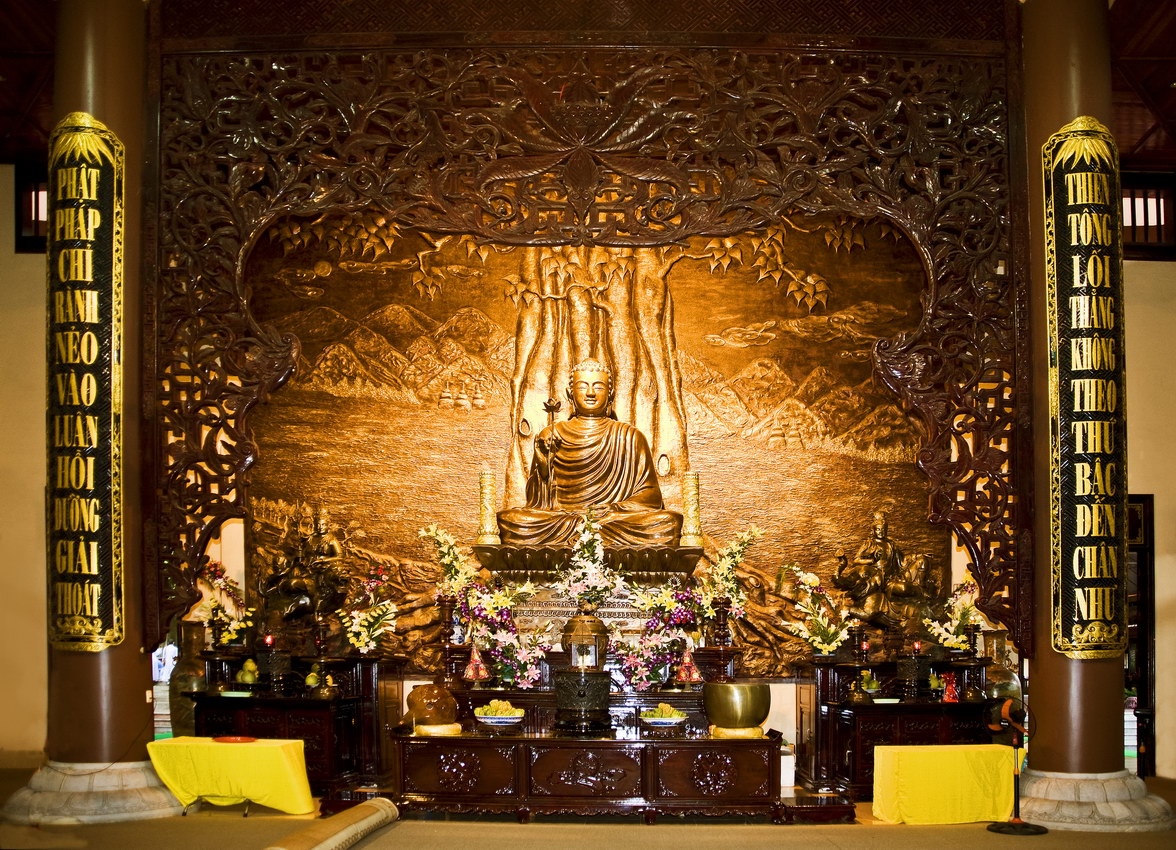Yen Tu Pagoda
1. Overview
Yen Tu Pagoda, located on Yen Tu Mountain in Uong Bi City, Quang Ninh Province, is one of the most sacred Buddhist sites in Vietnam. It is the spiritual center of the Truc Lam Zen sect, founded by King Tran Nhan Tong in the 13th century. More than just a temple, Yen Tu is a vast spiritual complex with ancient pagodas, hermitages, stupas, and monuments nestled amid lush mountains and clouds.
2. Historical Background
Yen Tu has a long and profound history that dates back to the 10th century, but it reached its peak of spiritual significance during the Tran Dynasty. In 1299, after abdicating the throne, King Tran Nhan Tong became a monk and founded the Truc Lam Zen sect here, unifying various Buddhist schools in Vietnam under a uniquely Vietnamese philosophy that combined Buddhism, Confucianism, and Taoism.
Over centuries, the site has been a pilgrimage destination for Buddhist monks, scholars, and devotees. It is often referred to as "The Buddhist Capital of Vietnam."
3. Architectural Features
Yen Tu is not a single pagoda, but a complex of religious structures stretching along the 1,068-meter high Yen Tu Mountain. Key architectural and spiritual sites include:
-
Truc Lam Yen Tu Zen Monastery: A modern monastery at the foot of the mountain, built in traditional style.
-
Hoa Yen Pagoda: Located at an elevation of 535 meters, it is one of the oldest and most important temples in the complex.
-
Mot Mai (One-Roof) Pagoda: A small pagoda clinging to a cliff, symbolic of determination and endurance.
-
Bao Sai Pagoda: A place for monks to meditate and study scriptures.
-
Yen Ky Sinh Stone Statue: An ancient sculpture believed to guard the sacred mountain.
-
Dong Pagoda (Bronze Pagoda): Located at the summit of Yen Tu, this temple is made entirely of bronze and sits in the clouds – a powerful symbol of enlightenment.
The path from the base to the top is lined with ancient stone steps, statues, towers, and pine trees, offering a journey that is both physical and spiritual.
4. Cultural and Religious Importance
Yen Tu is considered the birthplace of Vietnamese Zen Buddhism and remains one of the most important pilgrimage destinations in the country. Its significance includes:
-
A sacred site for Buddhist retreats, meditation, and ceremonies.
-
An annual Yen Tu Spring Festival (from the 10th day of the first lunar month), attracting tens of thousands of pilgrims.
-
A symbol of Vietnamese spiritual independence and cultural identity, through the development of a native Zen school by King Tran Nhan Tong.
-
A UNESCO World Heritage nomination as part of the Trang An – Yen Tu spiritual route.
5. Visiting Information
-
Location: Thuong Yen Cong Commune, Uong Bi City, Quang Ninh Province, Vietnam
-
Opening Hours: Daily; best time to visit is during the spring festival (January–March lunar calendar)
-
Entrance Fee: Varies; additional cost for cable car service
-
Transportation: Accessible by car from Hanoi (~2.5 hours); cable car and hiking paths available
-
Recommended for: Pilgrims, spiritual seekers, hikers, history enthusiasts
Tip: For the full experience, many visitors walk up the mountain (takes 4–6 hours), while others use the cable car system for easier access to the higher temples.
6. Conclusion
Yen Tu Pagoda is not just a temple, but a spiritual mountain journey that embodies the heart of Vietnamese Buddhism. It invites both body and soul on a pilgrimage through misty paths, ancient pagodas, and timeless teachings. Whether you seek religious fulfillment, historical insight, or natural beauty, Yen Tu offers an unforgettable experience and a deep sense of peace.




